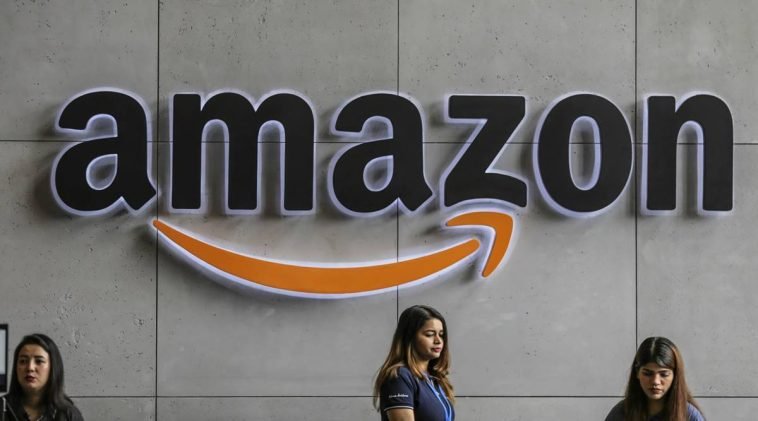Introduction.
Starting your Amazon FBA (Fulfilled by Amazon) business can feel like a whirlwind of steps and strategies.
Among all the things to consider, something as straightforward as printing labels might seem minor, but it’s actually crucial for smooth logistics and inventory management.
Proper labelling helps Amazon’s warehouses accurately track and manage your products, which directly impacts inventory visibility and delivery times.
Good labelling isn’t just about sticking a barcode on your product—done right, it can help you avoid unnecessary delays, extra costs, and potential errors with Amazon’s systems.
If you’re new to Amazon FBA, figuring out the labelling process might feel confusing at first. But trust me—it’s doable once you know the basics, and it’s a skill that’ll pay off in the long run.
In this guide, I’ll walk you through everything you need to know about printing labels for Amazon FBA.
I’ll cover why labelling matters, the types of labels you might need, printing options, and the pros and cons of doing it yourself vs. letting Amazon take care of it. By the end, you’ll feel confident about tackling this part of your FBA business.
What Are Amazon FBA Labels and Why Do You Need Them?
When you send your products to Amazon’s fulfilment centres, each item needs a label that’s scannable by Amazon’s systems.
These labels contain a unique identifier, typically in the form of a barcode, that lets Amazon’s team know exactly what the product is, who it belongs to, and where it’s going.
Amazon uses these labels to manage inventory, fulfil orders, and keep tabs on what’s in their vast warehouses. Without proper labels, there’s a higher chance of errors in shipping or delays in receiving your products.
Correct labelling helps:
- Prevent costly inventory mistakes by making sure products are correctly identified.
- Avoid delays in the fulfilment process, which can slow down delivery to your customers.
- Ensure compliance with Amazon’s requirements—mislabeled products can result in fees or even a halt in your shipments.
How Do I Print Labels For Amazon FBA?
Step 1: Understanding the Types of Labels You’ll Need
Amazon has specific label requirements depending on the type of product you’re sending in and your personal FBA setup. Here’s a quick rundown:
- FNSKU Label: FNSKU (Fulfillment Network Stock Keeping Unit) is a unique identifier for your product on Amazon. If you’re labelling products individually, this is typically what you’ll print out and stick on each item.
- Shipping Label: This label goes on the box you’re sending to Amazon, detailing your shipment’s contents, weight, and origin.
- Case Labels: For products shipped in bulk (known as case-packed shipments), each case needs a label that specifies the contents inside.
Step 2: Tools and Options for Printing Your Labels
The two primary methods for creating Amazon FBA labels are printing them yourself or using Amazon’s Label Service. Each has its benefits and drawbacks:
1. Printing Labels Yourself
When you print labels on your own, you have complete control. It’s a good option if you’re sending out smaller shipments or want to manage labelling costs. You can print directly from Seller Central or download the PDF file and print from your computer.
Pros:
- Cost-effective: Especially if you already have a printer, label sheets, and ink.
- Control: You can ensure each label is positioned and applied correctly.
- Immediate: No waiting on Amazon to label items, which can speed up the prep time.
Cons:
- Time-consuming: Especially with large shipments, hand-labeling each product can take quite a while.
- Quality: If your printer doesn’t produce high-quality prints, labels can fade or smudge, which may cause issues at Amazon’s warehouses.
- Supply costs: Printer ink and label sheets can add up over time.
2. Using Amazon’s FBA Label Service
Amazon also offers a labelling service where they’ll print and apply the labels for you once your items arrive at their fulfilment centres. It’s convenient, especially if you’re handling large shipments or lack the time to do it yourself.
Pros:
- Saves time: Amazon’s team handles everything for you, which can be a lifesaver when dealing with large quantities.
- Reduced errors: Amazon ensures that labels meet their standards.
- Faster receiving: Amazon processes your shipment faster since they don’t have to check for labelling issues.
Cons:
- Cost: Amazon charges $0.30 per unit for this service, which can add up to larger shipments.
- Less control: You won’t oversee the label placement or printing quality.
Step 3: Label Printing Options – Choosing the Right Printer and Supplies
If you decide to handle labels yourself, investing in a good-quality printer will make a difference. The two main types of printers FBA sellers use are:
- Laser Printers: Known for producing sharp, high-resolution prints. Laser printers are ideal for black-and-white text and barcodes, which are perfect for FBA labels.
- Thermal Printers: These printers are popular among high-volume sellers because they don’t require ink (which cuts costs in the long run). They also produce labels quickly and are built to print barcodes with minimal smudging.
Label Paper: Amazon recommends certain label sizes, generally 1” x 2-5/8” or similar, to fit barcodes neatly on products. Buying pre-sized, adhesive labels that match Amazon’s requirements will make the labelling process a lot easier.
Step 4: Printing and Applying Your FBA Labels Correctly
Once you have your labels, printing is straightforward:
- Log into your Amazon Seller Central account and find the shipment that needs labelling.
- Download the label PDF file Amazon generates.
- Print the labels on adhesive label sheets using your chosen printer.
- Apply the labels to your products, making sure each label is visible and not obstructed by packaging.
Pro tip: Place labels on a smooth, flat surface. Labels on curved surfaces or textured packaging may not adhere properly and could fall off during shipping.
FAQ on Amazon FBA Labeling
Q: Do I have to label every item myself, or can Amazon do it?
A: You can choose either option. Amazon charges $0.30 per item to label products for you, which is often worth it for large shipments.
Q: What happens if my labels are incorrect or smudged?
A: Incorrect or unreadable labels can lead to delays or fees. Amazon might also return the shipment or relabel it for a fee.
Q: Is there a specific type of printer or label paper required?
A: Not necessarily, but using a laser or thermal printer with Amazon-approved label sizes is highly recommended for durability and readability.
Q: Are there any alternatives to Amazon’s FBA Label Service?
A: Yes, some third-party companies offer FBA prep services, including labelling, but these often involve additional costs.
Wrapping It Up
Knowing how to print and apply labels for Amazon FBA is a key skill for any seller using Amazon’s fulfilment services.
It’s more than just sticking barcodes on your products; correct labelling ensures efficient inventory management and accurate order fulfilment.
Whether you decide to do it yourself or let Amazon handle it, understanding the process helps you keep control over your business and avoid preventable fees or delays.
So, what approach are you planning to take for your FBA labelling? Will you give it a try on your own, or are you leaning toward Amazon’s labelling service?





GIPHY App Key not set. Please check settings